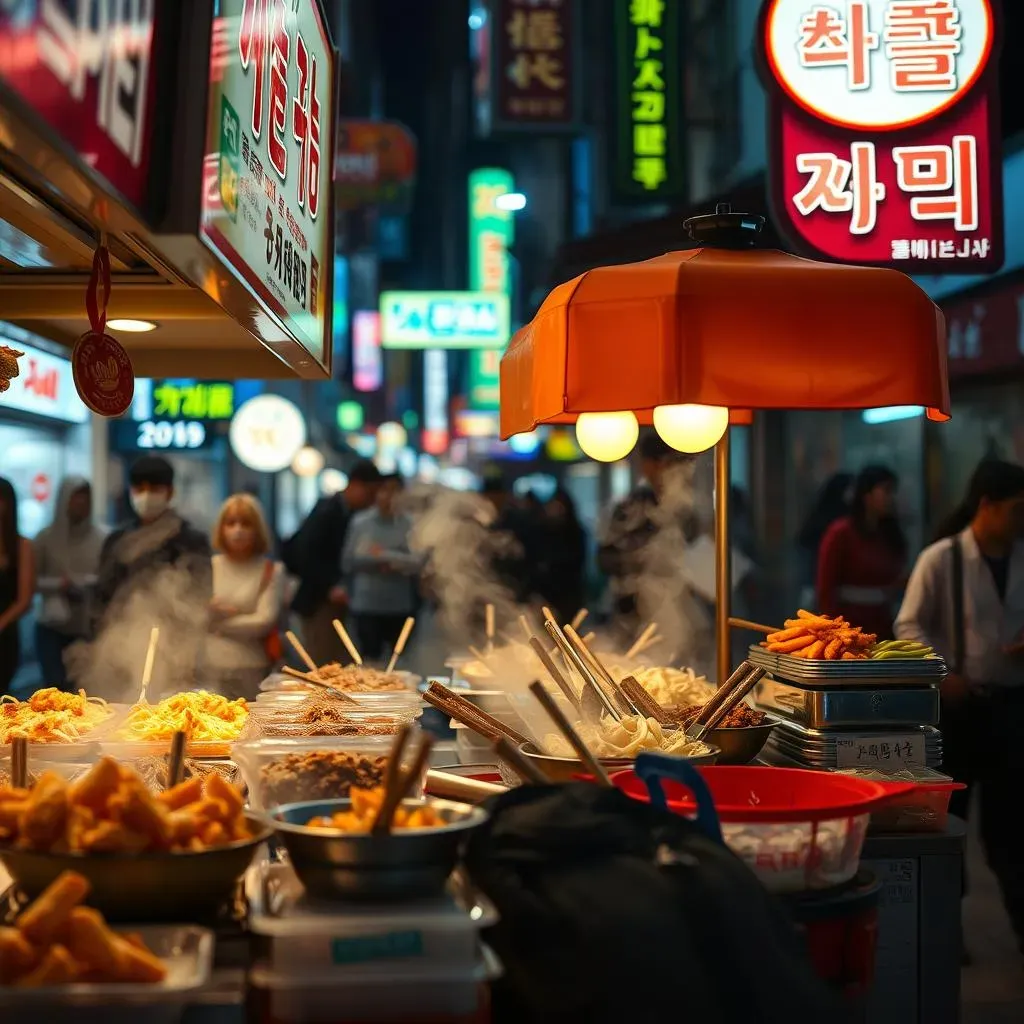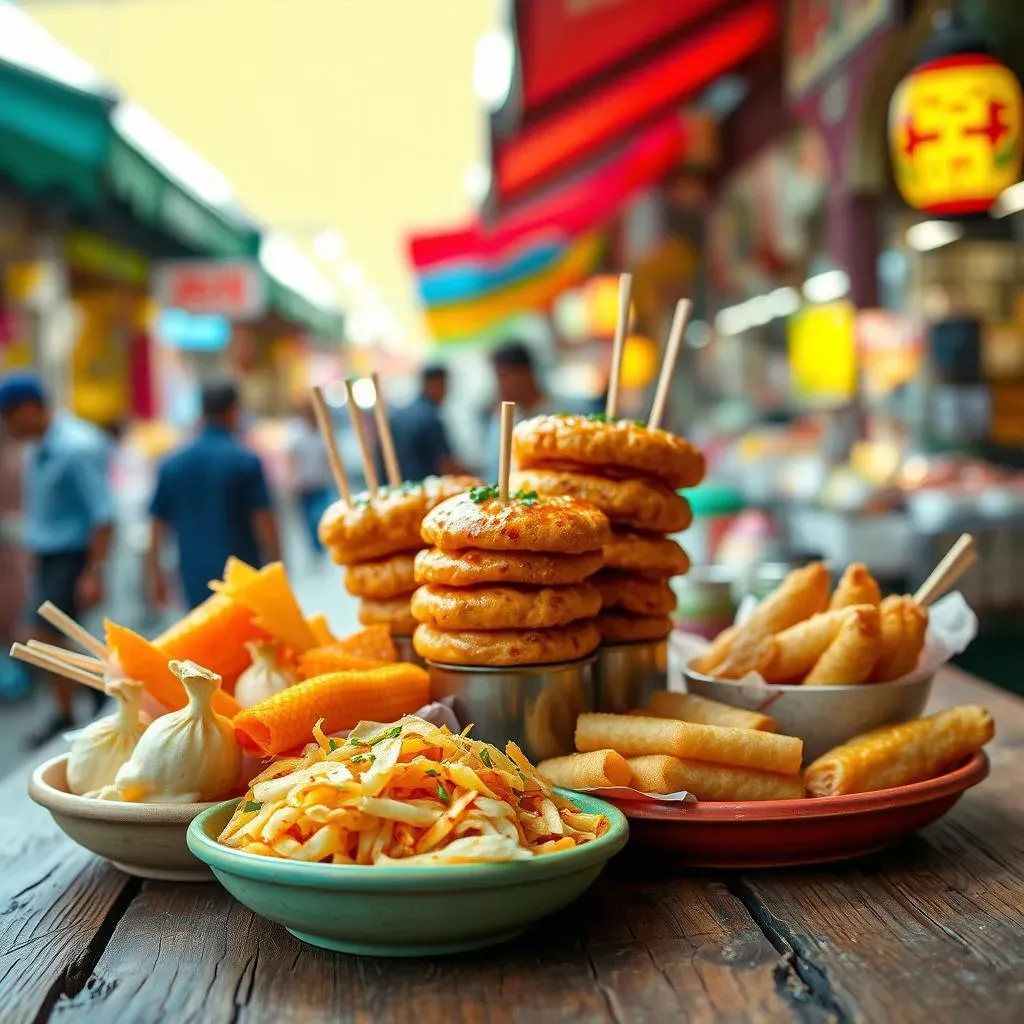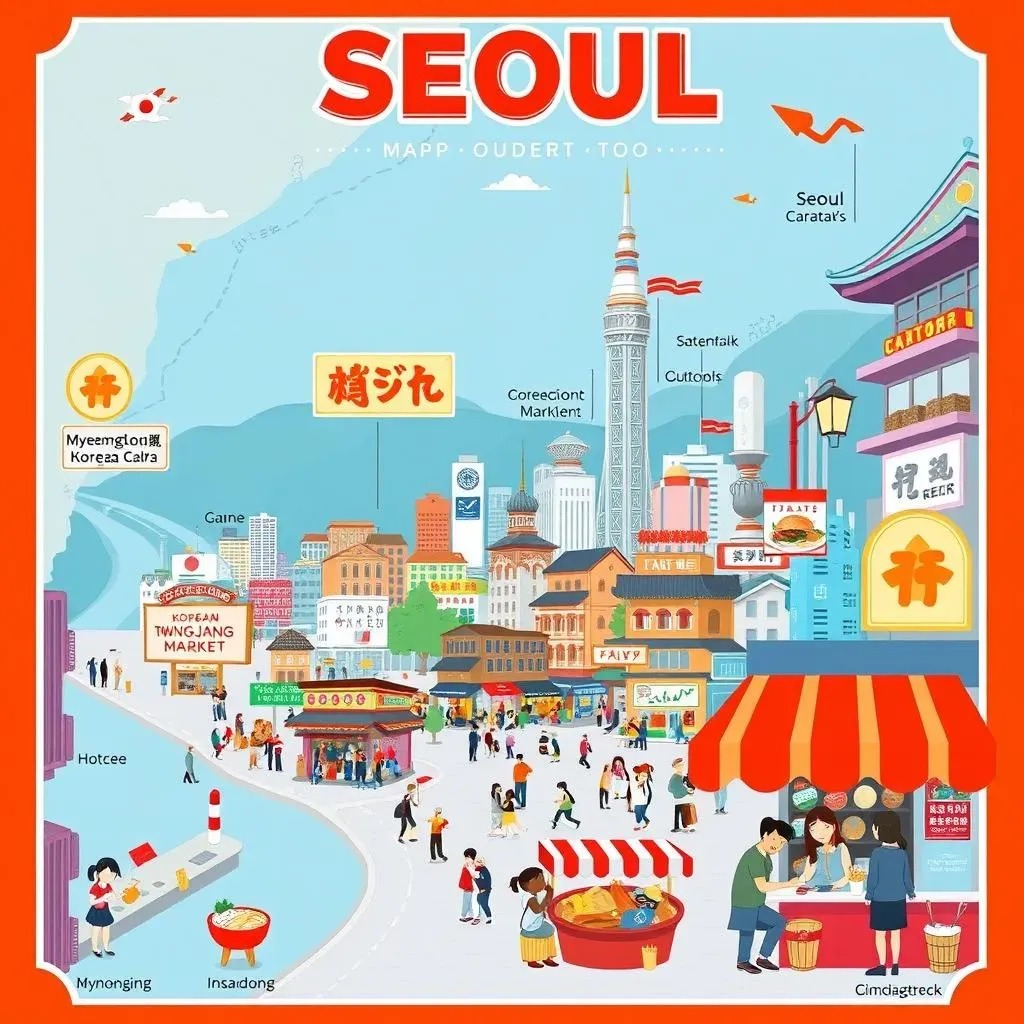Table of Contents
Get ready for a culinary adventure! This article is your passport to the vibrant and delicious world of common Korean street food. Forget bland tourist traps; we're diving headfirst into the authentic, everyday eats that make Korean street food so incredibly unique. We'll explore the savory sensations that will tantalize your taste buds, from the fiery kick of tteokbokki to the comforting warmth of fish cakes. But the fun doesn't stop there! We'll also uncover the sweet treats and surprising snacks that round out the Korean street food experience, revealing the stories and traditions behind each bite. This isn't just about food; it's a journey into Korean culture, a peek into the heart of everyday life, and a guide to finding your new favorite culinary obsession. So, whether you're planning a trip to Korea or simply craving a taste of something new, prepare to be amazed by the incredible variety and deliciousness of common Korean street food. Let's begin!
Savory Sensations: Exploring Common Korean Street Food
Savory Sensations: Exploring Common Korean Street Food
Tteokbokki: The Spicy Rice Cake Star
Let's start with the undisputed king of Korean street food savories: Tteokbokki! These chewy rice cakes swim in a vibrant, spicy sauce that's both sweet and fiery. It's a flavor explosion you won't forget. The level of spice can vary wildly, so newbies should start cautiously. You’ll find countless variations, from the classic gochujang-based sauce to creamy cheese versions. For a deeper dive into this iconic dish, check out our guide to Korean street food tteokbokki.
Think of it like this: imagine macaroni and cheese, but instead of creamy cheese, it’s a rich, spicy, and slightly sweet sauce. And instead of macaroni, you have these delightfully chewy rice cakes. It’s addictive!
Spice Level | Common Ingredients | Variations |
|---|---|---|
Mild to Extreme | Rice cakes, gochujang, gochugaru, fish cakes | Cheese, seafood, vegetables |
Odeng (Fish Cakes): A Comforting Classic
Next up, we have Odeng, or Korean fish cakes. These aren't your average fish sticks. They're often served on skewers, simmered in a flavorful broth, and perfect for a chilly day. The broth itself is a delicious mix of savory umami and subtle sweetness. It's the ultimate comfort food, especially when enjoyed on a cold evening. For more on this delicious street food, see our article on Korean fish cake street food.
These are simple, yet satisfying. Imagine a warm, flavorful fish-based broth, perfect for dipping these savory fish cakes. It's simple, yet incredibly satisfying.
- Served on skewers or in a bowl
- Often paired with a spicy dipping sauce
- A great option for a quick and easy meal
Sweet Treats and More: Expanding Your Common Korean Street Food Horizons
Sweet Treats and More: Expanding Your Common Korean Street Food Horizons
Hotteok: The Sweet Pancake Sensation
Now, let's talk sweet! Hotteok are warm, gooey pancakes filled with a delicious mix of brown sugar, cinnamon, and nuts. Imagine a pancake that's crispy on the outside and melts in your mouth on the inside – pure happiness! You can find them everywhere, and they're the perfect sweet treat to balance out all those savory snacks. For more sweet treats, check out our article on popular Korean street food.
Think of it as a warm hug in pancake form. The combination of textures and flavors is just amazing. It's a perfect ending to any Korean street food adventure.
- Crispy exterior, soft interior
- Filled with sweet brown sugar, cinnamon, and nuts
- A classic Korean street food dessert
Bungeoppang: Fish-Shaped Fun
Next up is Bungeoppang, a delightful fish-shaped pastry filled with sweet red bean paste. It's adorable, tasty, and a fun snack for all ages. The crispy exterior gives way to a warm, sweet filling – pure comfort food! Want to learn more about Korean snacks? Read our article on Korean street food snacks.
These are a fun and tasty treat. The combination of the crispy exterior and sweet filling is irresistible.
Pastry Type | Filling | Taste Profile |
|---|---|---|
Fish-shaped | Sweet red bean paste (typically) | Sweet, slightly nutty, crispy |
Beyond the Bites: The Culture of Common Korean Street Food
Beyond the Bites: The Culture of Common Korean Street Food
A Taste of History
Korean street food isn't just about deliciousness; it's deeply woven into the fabric of Korean culture. Its history stretches back decades, evolving alongside the nation's social and economic changes. Initially born from necessity, providing affordable meals after the Korean War, street food vendors became integral to daily life, offering quick, tasty sustenance to busy shoppers and workers. Today, it's a vibrant reflection of Korean ingenuity and resourcefulness. For a deeper dive into this rich history, explore our article on Korean street food history.
Think of it as a living history book, each bite telling a story of resilience, adaptation, and culinary creativity. It's a testament to the enduring spirit of the Korean people.
- Post-war origins
- Evolution of recipes and styles
- Reflection of Korean society
Street Food as Social Hub
Beyond the individual snacks, common Korean street food plays a vital social role. Street food stalls often become community gathering spots, places where friends and families connect over shared meals. They're a lively part of the social scene, hubs of activity and conversation. It's a place to catch up with friends, celebrate special occasions, or simply enjoy a delicious meal in a vibrant atmosphere. For more on the social aspect of Korean street food, check out our piece on Korean street food culture.
Imagine the bustling energy, the aroma of sizzling food, and the laughter of people enjoying a shared experience. It’s more than just a meal; it’s a social event.
Social Aspect | Impact | Examples |
|---|---|---|
Community gathering | Strengthens social bonds | Friends meeting for snacks, families enjoying meals together |
Modern Street Food Trends
But Korean street food isn't stuck in the past; it's constantly evolving. Modern trends and international influences are shaping new and exciting culinary creations. You'll find fusion dishes, creative twists on classics, and innovative presentations. Korean street food is a dynamic, ever-changing landscape, a testament to its adaptability and enduring appeal. For a glimpse at some contemporary trends, check out our article on popular Korean street food.
It's a delicious blend of tradition and innovation, a constant evolution of flavors and styles. It's exciting to see what new creations emerge.
- Fusion dishes
- Creative presentations
- International influences
Finding Your Favorite Common Korean Street Food: A Guide to Locations
Finding Your Favorite Common Korean Street Food: A Guide to Locations
Seoul's Street Food Hotspots
Seoul is undeniably the king of Korean street food destinations. Myeongdong is legendary, a bustling maze of stalls overflowing with tteokbokki, hotteok, and every imaginable snack. But don't limit yourself! Explore Hongdae for its trendy twists on classics and late-night pojangmacha (tented street stalls). Insadong offers a more refined experience, blending traditional treats with modern flair. And for a truly immersive experience, delve into the vibrant chaos of Gwangjang Market, a historic marketplace where generations of vendors have perfected their craft. For a more detailed look at Seoul's offerings, check out our guide to Korean street food in NYC (yes, even NYC has some great options!).
Think of it like this: Seoul is a street food buffet, offering everything from classic dishes to modern innovations. Each neighborhood provides a unique culinary experience.
Location | Vibe | Must-Try |
|---|---|---|
Myeongdong | Bustling, energetic | Tteokbokki, Hotteok |
Hongdae | Trendy, youthful | Fusion dishes, late-night snacks |
Insadong | Refined, cultural | Traditional sweets, artisan treats |
Gwangjang Market | Historic, authentic | Bindaetteok, Kimbap |
Beyond Seoul: Discovering Regional Delights
But the deliciousness doesn't end in Seoul! Venture beyond the capital and discover regional variations and unique specialties. Busan's coastal cuisine brings fresh seafood to the street food scene, while Jeonju's Hanok Village offers bibimbap-inspired street food. Each region boasts its own unique flavors and traditions, offering a chance to explore the diverse culinary landscape of Korea. To find authentic Korean street food, check out our guide to authentic Korean street food. You'll discover hidden gems and local favorites you won't find anywhere else.
Consider it a culinary road trip, each stop unveiling new and exciting flavors. The regional variations are a testament to the rich culinary heritage of Korea.
- Busan: Seafood-focused street food
- Jeonju: Bibimbap-inspired treats
- Other cities: Unique regional specialties